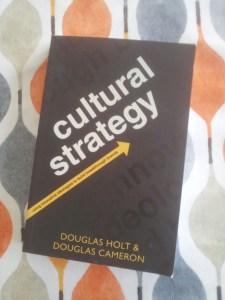
Last year, I was recommended the above business book by a colleague. I duly ordered the tome and it sat there on my bedside table sadly gathering dust. I think it was the rather dull black cover and too-broad-to-be-meaningful-or-inspirational title that put me off.
It turned out to be a surprisingly good read, most probably because it contained what I naturally tend to look for in reading material – namely, stories. I should be clear that these ‘stories’ are in fact case studies, but gripping nonetheless through their ‘before’ and ‘after’ transformations.
The nature of these transformations form the core idea being put forward in the book : using cultural innovation to drive business success. Instead of taking a building a better mouse-trap approach (improving through technological improvements/tweaks), or focussing on mindshare marketing (trying to own an abstract and generic attribute), this approach proposes championing a better ideology, which already sounds more compelling than the other options.
There are some examples where following this path has delivered resounding results. I would put the work done by the authors for Clearblue pregnancy tests as my ‘favourite’ story. The Clearblue product was ostensibly no different to all the others in the field. To cut through, Clearblue was advised to challenge the norms of the category: patriarchal medicine addressing women in a superior and condescending voice and a presentation of women as passive and married. Instead, Clearblue followed the advice to embrace body-positive feminism that revelled in the delightful details of pregnancy and ovulation tests including showing pee splashing over the stick and sexual appetite and action. Success and soaring sales followed.
In contrast, I found the account of Marlboro less convincing. This, admittedly, is not an example of the authors’ handiwork, but one where they describe how the agency and the client developed the Marlboro brand over several years. After multiple attempts, they eventually succeeded in creating a new cultural symbol: Marlboro Country. In hindsight the nature of this achievement is clear, but I would be tempted to argue that during the process itself, it was more a case of playing around with different creative routes (the geographic ‘Malboro Country’ failed; the cowboy archetype ‘Marlboro Country’ failed; the patrician cowboy failed; the gunfighter myth ‘Marlboro Country’ failed; the modern ‘Marlboro Country’ failed). Perhaps this story has value in showing us how hard it can be to work through the cultural strategy approach, however obvious and intuitive it may seem once it has been realised.
Even though I don’t have any brand managers to hand whom I can try to persuade to abandon brand bureaucracy’s ‘iron cage’, I will have to see if I can find a new cultural ideology for French horn practice, which puts it outside of the usual associations of homework and chores. Rather than my son thinking it is a duty and an obligation associated with learning, he should understand it’s about freedom and personal expression. I’m not sure the neighbours will be so pleased as the volume goes up.
